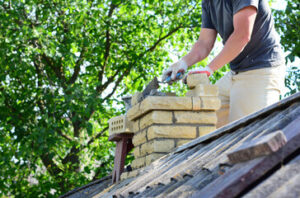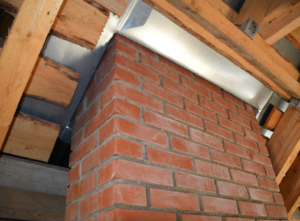Chimney Sweeps Charleston perform inspections, chimney sweeping, and fireplace maintenance. They also perform chimney repairs, including removing flammable creosote and damper repair.

Historically, chimney sweeps were children sold into the trade by their parents or orphaned at an early age. Their lives were harsh and dangerous as they climbed inside hot chimney flues to scrape coal deposits off the linings.
A chimney sweep cleans fireplace and chimney vents to keep them in good working order, preventing gas emissions and soot fires. They are knowledgeable and have a wide range of skills in the area of chimneys, fireplaces and heating systems. They follow specific guidelines and procedures that guarantee a thorough job and help homeowners maintain safe burning habits.
Chimney sweeps also conduct inspections of fireplaces, chimneys and heating systems to ensure that the system is safe for use. They look for code violations, cracks and gaps in the structure, extreme corbeling and the condition of chimney caps. They also inspect the smoke chamber, flue liner and smoke shelf for any glazed creosote buildup.
As a chimney sweep, you must be comfortable climbing ladders and entering crawl spaces. You will be transporting equipment to and from the chimney, so you need to be physically strong enough to lift and carry heavy equipment several times per day. You will also be wearing a mask to protect yourself from harmful, flammable gases.
You must also be able to follow basic safety guidelines when climbing on rooftops and performing other tasks. For example, you should wear the proper clothing and footwear, as well as a harness, when climbing on roofs and use proper safety equipment when assessing chimneys and other structures for stability. A chimney sweep also needs to be able to safely navigate tight spaces and not become claustrophobic when entering crawl spaces.
Whether you are a homeowner or an employee of a chimney company, you must pass a background check to be certified by the National Chimney Sweep Guild (NCSG). You can attend an in-person review course, which usually lasts for six days, or an online review program that is one week long. Both programs cover chimney sweeping, inspection and documentation basics. You must also pass a closed-book exam that is based on the Successful Chimney Sweeping trade book and the latest National Fire Protection Association 211 chimney and fireplace codes.
While being a chimney sweep isn’t for everyone, it can be a rewarding career for those with the right attitude. It requires a strong work ethic and commitment to continuing education and best safety practices.
Safety
Chimney sweeps are careful to clean up their work area, and they take measures to minimize messes as they inspect and sweep chimneys. They may be inside or outside, or both, and they might use a camera to check out the interior of the chimney flue and chimney walls for any obstructions that could be dangerous or cause a fire. They also make sure that the fireplace and fireplace chimney are cool before they begin to avoid any mishaps.
A chimney is designed to carry carbon monoxide, as well as smoke and vapors from combusting wood and gas, up through the chimney and out of the home. It is a vital system that protects the family from the dangers of carbon monoxide poisoning, and it only works properly when it is clean and free of combustible by-products. The simplest way to keep the system working correctly is to have it regularly inspected and cleaned by a CSIA-certified chimney sweep.
Many chimneys now have flue liners that sit inside the chimney and help funnel the smoke and vapors to the outdoors. These liners can be made of a variety of materials, and they must be inspected and treated with the same care as the chimney itself. A chimney sweep will know the type of liner in your chimney and will be able to recommend regular cleaning or maintenance schedules.
When hiring a chimney sweep, be sure that they or the company carries general liability and worker’s compensation insurance policies. This protects you in the event that someone is injured on the job. The company should also be certified by the CSIA, and you can check their credentials on the website of the Chimney Safety Institute of America.
Chimney sweeps can spend hours at a time on roofs, conducting inspections and sweeping chimneys. They need to be able to handle heights and stay upright in tight spaces. They also need to be able to use tools efficiently and to understand how the various equipment functions. This can be a physically demanding job, especially if the weather is cold or rainy. It is important that a chimney sweep take breaks periodically and drink plenty of water to stay hydrated while on the job.
Training
Chimney sweeps can become certified by completing a training program and passing an exam. In addition to learning basic chimney sweeping techniques, they also learn how to identify potential hazards in the chimney and fireplace system and make repairs to prevent fires and chimney leaks. Certification is a valuable tool for consumers as well as chimney sweeps who want to show their commitment to the industry and keep up with new trends and safety requirements.
There are several chimney sweeping associations that offer certifications to chimney sweeps, including the CSIA, which sets strict standards for its members. In addition to a comprehensive training program, the association offers a closed-book exam that covers the basics of chimney sweeping and inspection. This exam lasts one hour and includes a mix of true/false and multiple choice questions.
In order to pass the CSIA exam, chimney sweeps must have a minimum of two years experience in the field and have earned a certification level from CSIA or another organization. CSIA’s program goes beyond basic chimney sweeping and provides a deeper dive into topics such as the technical issues surrounding chimney construction and dynamics, chimney cleaning tips and tricks of the trade, the physics of wood-burning and creosote formation, installation of solid fuel appliances and EPA requirements, and codes, clearances and standards.
Many chimney sweeps choose to work as independent contractors, and are responsible for finding their own client base. This can involve door-to-door marketing, as well as advertising on social media sites like Facebook and Twitter. It’s important to know how to communicate in an approachable manner with customers and be able to explain the importance of chimney sweeping services.
Whether they are working for themselves or for an employer, most chimney sweeps have a hectic schedule during the peak season. They’re often slammed with service requests, and must be able to balance the labor demands of sweeping with the business aspects of marketing and generating new leads. They must also be able to store away cash to pay for supplies and other expenses during the leaner months.
Certifications
Chimney sweeps must be licensed in order to work in the industry. This process requires passing a background check and adhering to certain safety standards. Additionally, it is important for a chimney sweep to have insurance that protects him against liability issues. It is also a good idea for chimney sweeps to register their business, which can help them keep track of tax requirements and other documentation. Additionally, it is a good idea for them to open a business bank account and get a credit card in order to separate their business expenses from personal expenses.
Chimney Sweep Training
To obtain a license, chimney sweeps must complete an industry-sponsored program that provides them with the necessary knowledge and skills to clean and inspect chimneys and fireplaces. This type of training typically includes classroom instruction, in-person and online reviews, and hands-on experience by servicing real homes. The course lasts several days and students are required to pass an exam at the end of the program.
Although it is possible to become a chimney sweep without going through a formal training program, most professional sweeps have undergone extensive education and training. They are licensed and insured, and they understand the technical issues related to chimney construction and dynamics, wood-burning stoves and EPA requirements, codes, clearances and standards. They are familiar with the chemistry of smoke, fire and creosote and know how these elements affect chimneys.
Moreover, professional chimney sweeps are able to identify and address potential problems before they turn into dangerous situations. As a result, they have the right tools to repair chimneys and fireplaces as well as to install chimney linings and other accessories.
The CSIA is the best organization to pursue certification as a chimney sweep. It has a rigorous process that ensures the chimney sweep meets high educational and ethical standards. Additionally, homeowners can be confident that a chimney sweep who is a member of the CSIA will not engage in unfair or deceptive practices. In fact, any chimney sweep that violates the code of ethics risks having their CSIA certification revoked. This is an important safeguard for homeowners who are looking for a trustworthy and knowledgeable chimney sweep.
